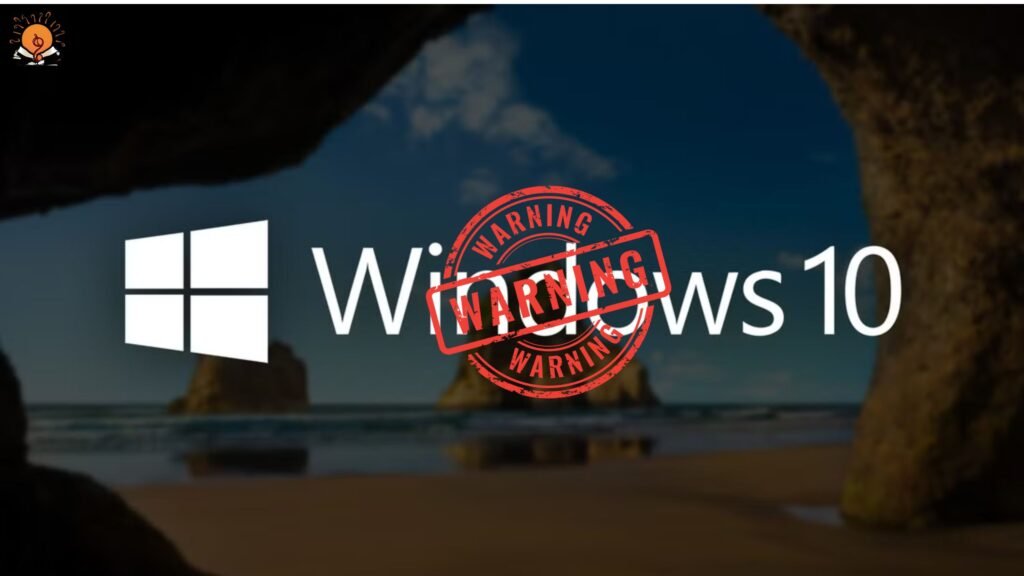Windows 10 support end 2025 Microsoft’s recent announcements about ending support for Windows 10 and phasing out OneNote for Windows 10 mark a pivotal shift for millions of users and businesses. With Windows 10’s extended security updates (ESU) expiring in October 2025 and OneNote’s termination already underway, staying informed is critical to avoid security risks and workflow disruptions. According to a 2023 Statista report, 30% of businesses still rely on Windows 10, highlighting the urgency of this transition.
Cybersecurity threats like outdated software often overlap with email scams. For insights into how hackers exploit human psychology, see The Psychology Behind FBI Warning Email Scams.
1. Windows 10 Support Termination: Key Dates and Risks
Microsoft has confirmed that Windows 10 will reach end-of-life (EOL) on October 14, 2025, after which no security patches or technical support will be provided. For users clinging to this OS, the stakes are high:
- Security Vulnerabilities: Unpatched systems become prime targets for cyberattacks. As noted by Forbes, outdated software is a “goldmine for hackers.”
- Compliance Issues: Businesses using unsupported software may violate industry regulations like GDPR or HIPAA.
- Performance Gaps: New hardware and software innovations will prioritize Windows 11 compatibility.
Case Study:
A mid-sized healthcare provider avoided HIPAA fines in 2024 by upgrading all Windows 10 devices to Windows 11 six months ahead of deadlines. Their IT director noted: “Proactive migration saved us $250K in potential penalties.”
Staying ahead of tech trends is critical. Learn how NVIDIA’s 2025 GTC Announcement Could Change Everything for future-proofing your systems.
2. Expert-Backed Strategies to Transition Smoothly
To minimize disruptions, follow these steps endorsed by IT professionals and Microsoft partners:
A. Upgrade to Windows 11
- Check Compatibility: Use Microsoft’s PC Health Check tool to verify hardware eligibility (e.g., TPM 2.0).
- Backup Data: Use OneDrive or external drives to safeguard files.
- Adopt Phased Rollouts: Enterprises should test Windows 11 in stages, per Gartner’s 2025 IT roadmap.
For optimizing new OS features, explore iOS 18.3.2 Update Features, Security, and User Insights to compare cross-platform security strategies.
B. Migrate from OneNote for Windows 10
To facilitate a smooth transition, Microsoft provides a detailed migration process, which includes the following steps, extracted from official support documentation:
| Step | Details |
| 1. Download OneNote on Windows | Download from the Microsoft Store if not already included. |
| 2. Sign in and open notebooks | Sign into the updated app and open your notebooks; migration is complete after this. |
| 3. Verify sync before switching | Ensure all notebooks in OneNote for Windows 10 are synced. Right-click notebooks, select “Sync Now.” Resolve any sync errors. |
| 4. Check for misplaced sections | Navigate to View Tab > Misplaced Sections, move to a notebook, and ensure synced. |
| 5. Verify notes after migration | Open each notebook in OneNote on Windows, ensure all notes appear correctly. If missing, ensure synced in OneNote for Windows 10 or copy over. |
| 6. Uninstall OneNote for Windows 10 | Only after verifying notes, uninstall via Settings > Apps > Installed Apps, find “OneNote for Windows 10,” select “… -> Uninstall.” Ensure no local data loss by syncing to cloud first. |
| 7. Check account settings | Ensure all accounts are signed into OneNote on Windows; multiple accounts supported. |
- Export Existing Notes: Save notebooks to OneDrive or SharePoint. Follow Microsoft’s OneNote migration guide.
- Train Teams: Use Microsoft’s free training modules to familiarize users with the new OneNote interface.
Need a tablet-friendly alternative? iPad Air M3: Your Ultimate Guide to Apple’s Latest Tablet covers hybrid work setups.
3. How Businesses Can Prepare
Hybrid workforces rely on stable OS and collaboration tools. Recommendations:
- Audit Systems: Identify all devices running Windows 10 or legacy OneNote.
- Prioritize Critical Workloads: Upgrade departments handling sensitive data first (e.g., finance, HR).
- Leverage Microsoft’s ESU Program: For a fee, extend Windows 10 security updates temporarily.
Microsoft’s Windows 10 Phaseout Timeline
(Visual timeline added for accessibility)
- 2023: OneNote for Windows 10 loses new features.
- 2024: Extended Security Updates (ESU) sales begin.
- October 2025: Windows 10 and OneNote support terminate.
For future OS strategies, see iOS 18.3.2 Update Features to balance productivity and security.
Windows 10 End of Support
The end of support for Windows 10 on October 14, 2025, means that Microsoft will no longer provide security updates, bug fixes, or technical support, leaving systems vulnerable to cyber threats. This is a significant concern, as highlighted by expert opinions, with James McQuiggan from KnowBe4 noting that cybercriminals may exploit vulnerabilities post-end-of-life, knowing the software will not be patched. Steve Haskew from Circular Computing adds that this poses compliance risks for industries requiring supported software.

Users have several options to consider:
- Upgrade to Windows 11: Eligible PCs can upgrade for free via Windows Update, as outlined in the Windows Experience Blog. Check eligibility under Settings > Update & Security > Windows Update. OneNote termination 2025
- Purchase New Hardware: For ineligible PCs, buying a new device, such as a Copilot+ PC, is an option, though it may be costly.
- Extended Security Updates (ESU): Microsoft offers a paid ESU program, with pricing as follows:
| User Type | Year 1 Cost | Year 2 Cost | Year 3 Cost | Total (3 Years) |
| Consumers | $30 | Not specified | Not specified | Up to $90 (assumed) |
| Education | $1 | $2 | $4 | $7 |
| Business | $61 | $122 | $244 | $427 |
The ESU program provides critical security updates but does not include new features or technical support. For consumers, it seems to be a one-year option at $30, extendable up to three years for businesses, based on recent announcements.
Other alternatives include using third-party patching like opatch Agent, switching to Linux, or using ChromeOS Flex, though these may have compatibility issues and additional costs.
Conclusion
Microsoft’s 2025 changes are a wake-up call for users to modernize their tech stacks. By upgrading to Windows 11, migrating to supported apps like OneNote for Windows 11, and consulting IT experts, individuals and businesses can maintain productivity and security. For more guidance, read our related article: Best Windows 11 Features for Productivity.
Explore hybrid work tools like iPad Air M3 to complement your Windows 11 setup.
- Upgrade to Windows 11 guide
- Windows 10 security risks 2025
- Microsoft end-of-life support







3 thoughts on “Unlock 10 Lucrative Remote Jobs for Beginners – Launch Your Career Now”
Pingback: Top 7 Well-Paid Remote Marketing Jobs for New Graduates -
Pingback: iOS 18.3.2 Update: Powerful Features, Enhanced Security, and User Insights -
Pingback: Home Office Setup: 10 Tips for a Productive Space -